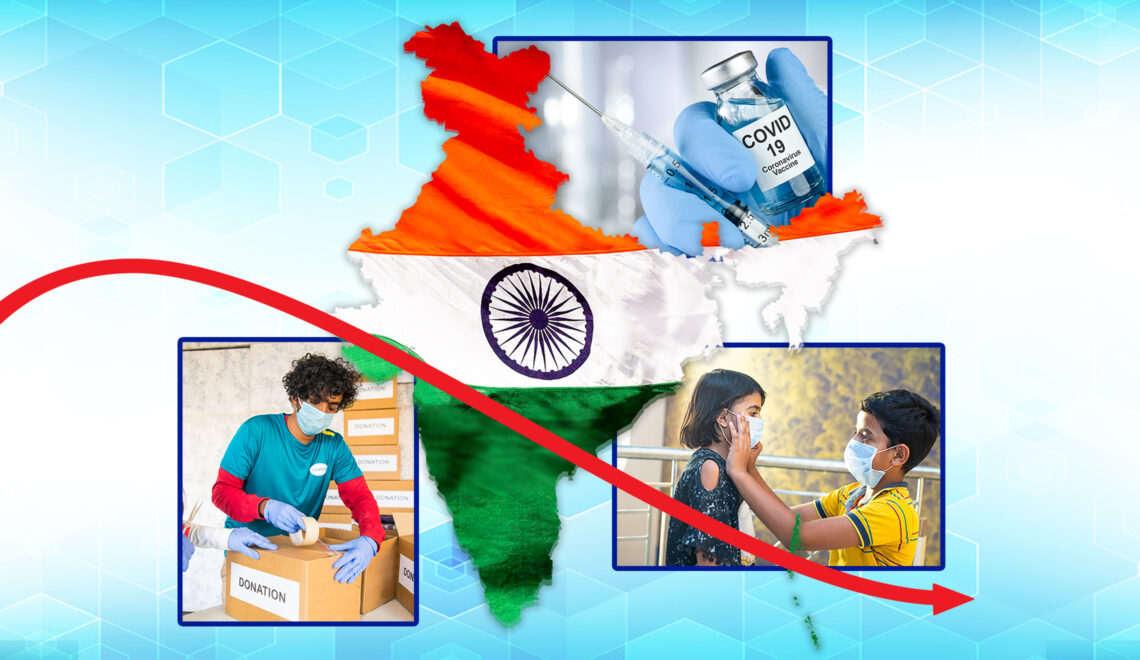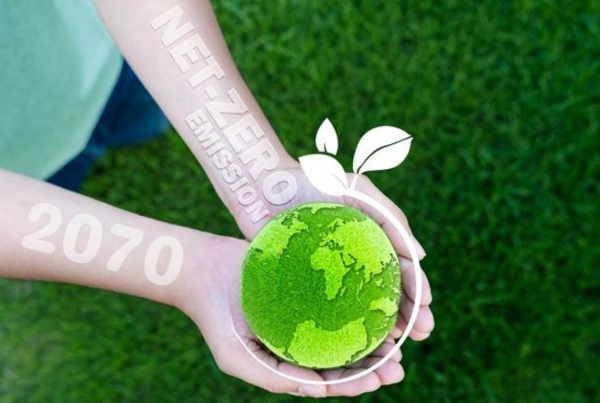While COVID-19 has changed the world as we know it, the impact is far from over. The virus has devastated lives, economies, families, relations, and physical and mental well-being. Like most nations, India too has been severely impacted by this pandemic.
The first wave in India was controlled and managed well with a long and stringent lockdown, as the Government was trying to figure out the possible ways to fight this virus. Inventing vaccines, strengthening the health infrastructure, providing ration to hundreds of million people for months, and working aggressively towards optimum utilization of resources to get prepared for the after-effects were few initiatives taken by the Government.
Our Healthcare infrastructure has a long way to go to be able to meet the healthcare requirements of the large Indian population and an unpredicted blow like the second wave only strained the industry further. Therefore, many makeshift hospitals were created, and help from various departments like the DRDO (Defence Research and Development Organisation), and Indian Railways was administered to get more beds so that more people can be accommodated if required.
PPE kits and masks were not being manufactured on a large scale when the Pandemic struck in March 2020. However, rising to the mantra of “Aatmanirbhar Bharat”, new manufacturing units were set up in just a couple of months. And, with the combined help of the public and private sector, we could witness the making of a self-reliant India in many basic medical protection gears.
The Second Wave of COVID-19 in India
Majority of the Indian population started behaving in a relatively carefree manner after the first wave was behind us. People, in general, shunned masks and forgot about social distancing. Markets, shops, offices etc. had fully re-opened and political, social and religious gatherings being organized at large scales, without catering to social distancing and other precautionary norms. This is when the second wave struck in April 2021 with massive repercussions across the country.
It was the same virus, but a mutant variant and deadlier. This new variant called ‘Delta’ infects the lungs within just a few hours, and many patients lost their lives due to the impact on lungs and the lack of oxygen. Scientists, doctors, and even the WHO had not predicted that the mutant virus in the second wave would hit the lungs so badly and the subsequent massive demand for oxygen.
All the oxygen which was reserved for industrial use was redirected to medical facilities. Corporate and industries came together to extend their support during this tough time and provided all possible help. Yet, the supply did not suffice as we have a limited number of Cryogenic Tankers to carry oxygen from manufacturing units to hospitals.
Once again, support from the Indian Army and Indian Railways was used to transport these Cryogenic Tankers from the plants to other areas to decrease the transportation time in the supply chain. Moreover, many ally countries helped India by sending Oxygen Tankers when it was needed the most.
The second wave took many more lives than the previous one, and this time, the young were the most vulnerable. The number of cases and deaths per day broke all the records. The health infrastructure was in shambles, especially during the months of April and May 2021.
The good news is that vaccination is underway across most of the states and UTs in India. Though the pace is slow, with more country-made and foreign vaccines getting approvals, the vaccination drive is likely to gear up in the coming months.
The Govt. of India (GoI) has issued a statement that almost all the adult population of India will get vaccinated by December 2021. However, vaccinating everyone in a country like India that has a mammoth estimated population of 1.39 billion, in itself, is a herculean task. To make things worse, fake news being circulated about vaccines is also acting as a deterrent for many to get vaccinated.
CSR for COVID-19 Relief: A Ray of Hope
The Ministry of Corporate Affairs issued a new circular dated 23rd March 2020 stating that companies can use their CSR funds for COVID-19 related help. Furthermore, a clarification was issued by the GoI on 5th May 2021 mentioning that spending of CSR funds for ‘creating health infrastructure for COVID care’, ‘establishment of medical oxygen generation and storage plants’, ‘manufacturing and supply of oxygen concentrators, ventilators, cylinders, and other medical equipment for countering COVID-19’ or similar activities are eligible CSR activities.
Link: https://www.mca.gov.in/Ministry/pdf/GeneralCircularNo9_05052021.pdf
Corporate India’s Role during COVID-19 Pandemic
The existing equipment and healthcare systems are not adequate to fight this war against the virus. Therefore, Indian Corporate Sector, Businesses, Industries, and the Foundations associated with them have wholeheartedly supported the country during these tough times.
Companies are using their CSR funds to contribute to PM CARES (Citizen Assistance and Relief in Emergency Situations) Fund, establishing hospitals, COVID-care centres, Oxygen Plants, community welfare plans, innovative healthcare solutions to solve the med-tech challenges during the second wave of COVID-19, and various support and relief work during the pandemic. These measures are jointly contributing to making a self-reliant India, especially in the health sector.
Many companies have made donations to NGOs to support migrant laborers, daily-wage earners, the homeless, and slum dwellers, who were worst affected during the pandemic. The CSR initiatives by various Corporates in India include funding COVID-19 relief measures across the country, healthcare systems, supplying meals to the underprivileged, and providing personal protective equipment (PPEs), face shields, and N95 masks to frontline COVID warriors.
A number of companies have also provided the option to voluntarily donate one day’s salary towards Covid-Relief to their employees. Moreover, few corporations have also offered to provide medical and technological expertise to fight against COVID-19.
The Way Forward
The second wave of the pandemic in India has now started subsiding and scientists predict that the situation will stabilize by July 2021. However, the possibility of a third wave has not been denied by the Health Department of India and the WHO.
GoI should thus, take stringent measures to ensure that the majority of the population gets vaccinated in the shortest possible time. Stricter adherence to COVID-19 guidelines, in general, should also be administered so that a third wave can be avoided.
Right education and information regarding the vaccine are equally important so that people are not afraid of the vaccine, especially those living in rural areas. The health infrastructure has to be more robust and provisions to include more health workers including medical students should be in place.
Finally, we as responsible citizens, should also follow the basic COVID-19 guidelines by avoiding crowded places, maintaining social distance, and most importantly, always wearing a mask and remaining sanitized.









